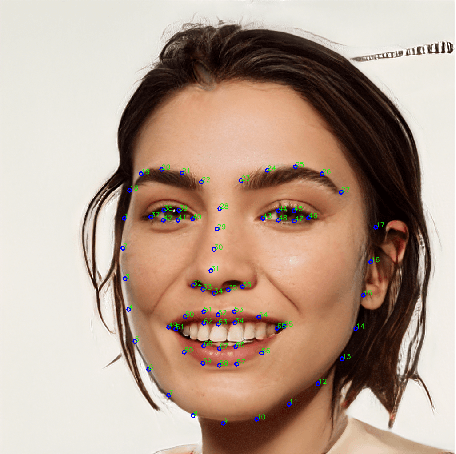Yubo Lang
Landmark Enhanced Multimodal Graph Learning for Deepfake Video Detection
Sep 12, 2022



Abstract:With the rapid development of face forgery technology, deepfake videos have attracted widespread attention in digital media. Perpetrators heavily utilize these videos to spread disinformation and make misleading statements. Most existing methods for deepfake detection mainly focus on texture features, which are likely to be impacted by external fluctuations, such as illumination and noise. Besides, detection methods based on facial landmarks are more robust against external variables but lack sufficient detail. Thus, how to effectively mine distinctive features in the spatial, temporal, and frequency domains and fuse them with facial landmarks for forgery video detection is still an open question. To this end, we propose a Landmark Enhanced Multimodal Graph Neural Network (LEM-GNN) based on multiple modalities' information and geometric features of facial landmarks. Specifically, at the frame level, we have designed a fusion mechanism to mine a joint representation of the spatial and frequency domain elements while introducing geometric facial features to enhance the robustness of the model. At the video level, we first regard each frame in a video as a node in a graph and encode temporal information into the edges of the graph. Then, by applying the message passing mechanism of the graph neural network (GNN), the multimodal feature will be effectively combined to obtain a comprehensive representation of the video forgery. Extensive experiments show that our method consistently outperforms the state-of-the-art (SOTA) on widely-used benchmarks.
Identification of splicing edges in tampered image based on Dichromatic Reflection Model
Apr 09, 2020Abstract:Imaging is a sophisticated process combining a plenty of photovoltaic conversions, which lead to some spectral signatures beyond visual perception in the final images. Any manipulation against an original image will destroy these signatures and inevitably leave some traces in the final forgery. Therefore we present a novel optic-physical method to discriminate splicing edges from natural edges in a tampered image. First, we transform the forensic image from RGB into color space of S and o1o2. Then on the assumption of Dichromatic Reflection Model, edges in the image are discovered by composite gradient and classified into different types based on their different photometric properties. Finally, splicing edges are reserved against natural ones by a simple logical algorithm. Experiment results show the efficacy of the proposed method.
 Add to Chrome
Add to Chrome Add to Firefox
Add to Firefox Add to Edge
Add to Edge